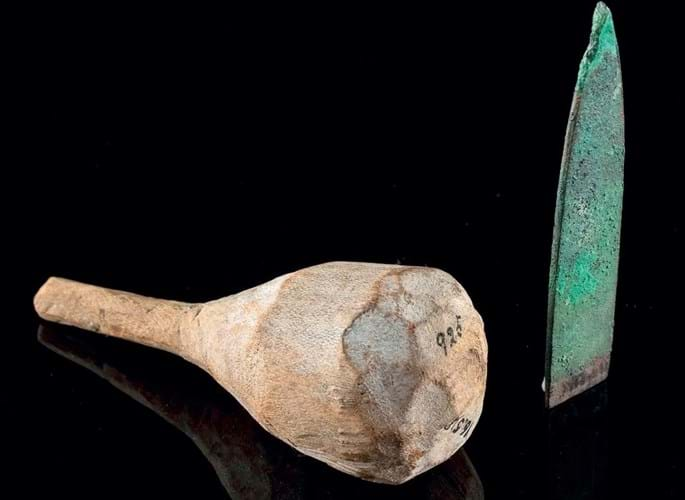The 4in wooden mallet and a 3in copper chisel date from sometime between the 18th Dynasty of the New Kingdom (the era of Tutankhamun) and the 31st Dynasty when Egypt became part of the Persian Empire.
Mallets of this petite size served a votive purpose rather than as functional tools. It was probably made as an offering to a sculptor or mason of some status or skill.
Long provenance
Very much part of their commercial appeal today is a long provenance that pre-dates the tightening of Egyptian export laws in the 1920s and namechecks some of the best-known museums in the US.
Once in the collection of the Egyptologist Émile Brugsch (1842-1930), curator of the Bulaq Museum in Luxor (the precursor of the Egyptian Museum in Cairo’s Tahrir Square), the mallet and chisel were later owned by the banker Anthony J Drexel (1826-93).
They formed part of the antiquities collection at Drexel University, Philadelphia, that was later sold to the Minneapolis Institute of Art (1915-58) and dispersed on the art market in the 1950s.
Since then, as part of the William Benson Harer family collection, it has been exhibited at the Los Angeles County Museum of Art (1986- 91), the University of Arizona Museum of Art, (1993) and the Robert and Frances Fullerton Museum of Art, San Bernardino 1996-2023).
Estimated at $2000-2500, the lot sold to an internet bidder via LiveAuctioneers for $6000 (£4950).















